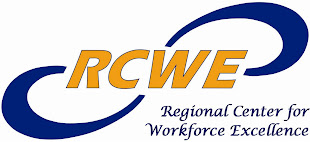WASHINGTON, D.C. - U.S. Senator Bob Casey (D-PA) and Congressman Jared Polis (D-CO) introduced the Computer Science Education Act, which will help prepare Americans for the more than 1.5 million high-wage computing jobs that are expected to be created in the U.S. by 2018. The bill will help states to increase and strengthen their computer science offerings in K-12 education.
"With significant job creation over the next decade in industries fueled by computer science, better K-12 instruction in this STEM field is critical to our economic competitiveness,” said Senator Casey. “To help our schools improve computer science instruction, I am proud to introduce the Computer Science Education Act in the Senate. This legislation will give more students the opportunity to study computer science and position themselves for the jobs of the future."
“Computer science careers will provide good paying jobs for Americans and prepare our economy to compete and win the global market,” said Congressman Polis. “America can only succeed economically if our workforce is prepared for the best paying jobs, such as those in computer science. If America’s is to remain an economic superpower—and if we’re to support jobs for the middle class—we must be the world’s leader in computer science education.”
“The Computer Science Education Act encourages states to examine what is going on in local computer science classrooms and consider how to give students educational opportunities that support lucrative, rewarding careers and contribute to the most dynamic, innovative industry in the United States,” according to Maggie Johnson, Google’s Director of Education and University Relations. “Computer science must be accommodated in our nation’s classrooms if we want to be successful in the 21st Century.”
Between 2004 and 2008, the number of computer-related bachelor's degrees granted in the U.S. fell from roughly 60,000 to 38,000. The availability of introductory secondary school computer science courses has also decreased—by 17 percent since 2005—and the number of Advanced Placement (AP) computer science courses has decreased by 33 percent.
While some states allow computer science courses to count toward a secondary school core graduation requirements, most states that have specific course requirements for graduation count computer science courses only as electives. Many states also do not have a certification process for computer science teachers, and where certification processes do exist, such processes often have no connection to computer science content.
To reverse these troubling trends and prepare Americans for jobs in this high-wage, high-growth field, the Computer Science Education Act will:
- Ensure computer science offerings are an integral part of the curriculum;
- Develop state computer science standards, curriculum, and assessments;
- Improve access to underserved populations;
- Create professional development and teacher certification initiatives, including computer science teacher preparation programs in higher education;
- Form a commission on computer science education to bring states together to address the computer science teacher certification crisis; and,
- Establish an independent, rigorous evaluation of state efforts with reporting back to Congress and the administration.
The bill would provide two-year competitive planning grants to states, as well as five-year competitive implementation grants to states to support their plans to increase and strengthen schools’ capacity to offer effective computer science education.
###


